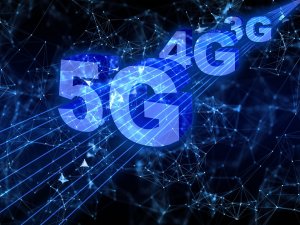Residential buildings of the 16th stage of development, which were recently opened, have smart home systems installed in a number of apartments, the state news Agency of Turkmenistan reports.
The system allows remote control of electrical devices, for example, from a smartphone or voice command. That is, the user can not only give certain commands by typing on a mobile phone, but also "talk" with their electrical appliances using it. Specially developed software contributes to the stability of the process and provides detailed information about the characteristics of all managed devices.
Such a residential automation system includes control and management of lighting, heating, ventilation and air conditioning, and security.
So, correctly located motion sensors allow the light to light up only in the place where the person is. Smart homes have automated curtains and blinds that will help you use daylight and heat more efficiently. To do this, the system provides for automatic operation, when the time of day, season and weather outside the window are taken into account.
The security system with remote control via mobile phones or voice commands is programmed to automatically close and open doors and Windows, which, thanks to the installed sensors, can independently close, responding to wind or rain, ensuring safety.
When you run any of these commands, your mobile phone receives SMS, MMS notifications, or voice alerts and calls. In addition, you can get pictures and videos from the apartment when a signal is received from the motion sensor, intercom and see what is happening there in your absence, as well as conduct online video surveillance.
The operation of the smart home is based on the principle of executing commands, and the Central controller can receive them both from a person and from sensors. In the first case, you ask the system to turn on the air conditioner or turn off the heating via voice commands, remote control or smartphone, and the Central processor processes the command and sends it to the desired device.
In the second case, the presence of a person is not required. The computer either sends commands to the devices at a certain time in accordance with previously set algorithms, or it makes decisions based on sensor readings depending on changing conditions.
For example, in thermoregulation systems, temperature and humidity sensors report data to the system, which in turn sets the necessary parameters for heating, air conditioning, and humidification. And if the motion sensors detect activity in the house when it should not be, the computer takes it as a signal to turn on the alarm or send a message to the security service.
Ensuring technical safety, protection from flooding, water and gas leaks, smoke, and warning about electrical failures – all this is an important task of the smart home. The system can neutralize the emergency situation itself and notify the apartment owner in a timely manner. If any leak is detected, a signal is sent to the server and the gas or water supply is cut off. at the same time, an alert signal is sent to the mobile phone.
In the future, new homes will also be equipped with devices to receive a signal in the event of an earthquake. If a certain amplitude is exceeded, the sensor from the seismic station will transmit a signal to the apartment, after which all electrical devices will automatically turn off.
The smart home system also allows you to get information about the consumption of electricity, gas and water, remotely adjust the air temperature in the room, etc.
According to Turkmen developers, household digitalization allows you to set the maximum energy saving mode in the house, automatic and remote control of fans and deflectors, gas and electric stoves, including each burner, water heater and other devices, and even set up automatic watering of indoor plants based on the degree of soil humidity.
To do this, the apartment is equipped with devices such as "smart sockets", "smart mirrors", which can also show news, weather information, time, room temperature and have a field for notes.
Turkmen students, including Oguzkhan University of Engineering and technology, took an active part in this project, using their own developments instead of foreign ones.
Today, almost all spheres and industries in Turkmenistan are being transformed in accordance with the concept of digital economy development initiated by the leader of the nation. Teachers and students of the above-mentioned University demonstrated their competence and creative approach to solving problems by presenting an original project of the "smart home" implemented in life.
Earlier we reported That more than a thousand families celebrated a housewarming party in a new residential area of Ashgabat.













